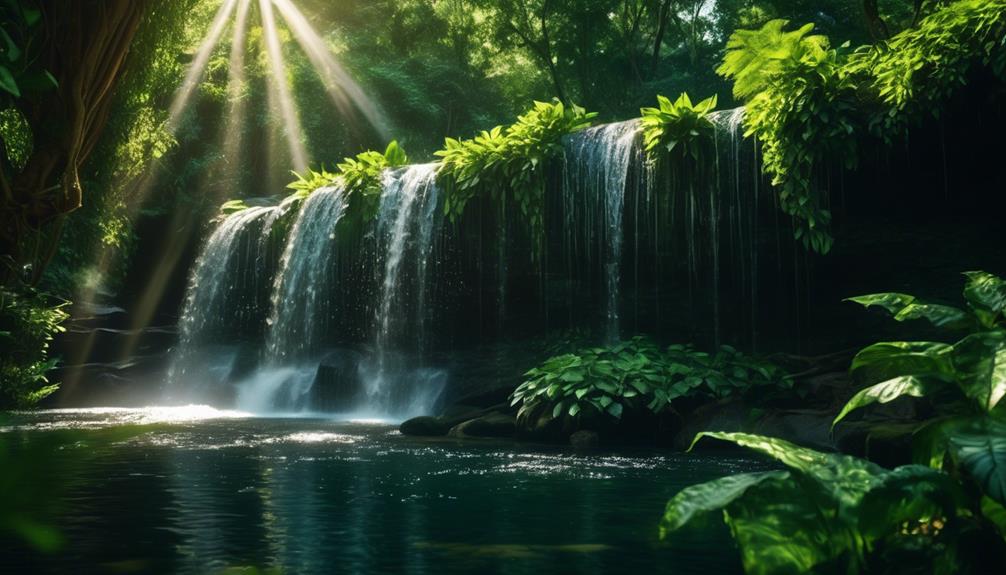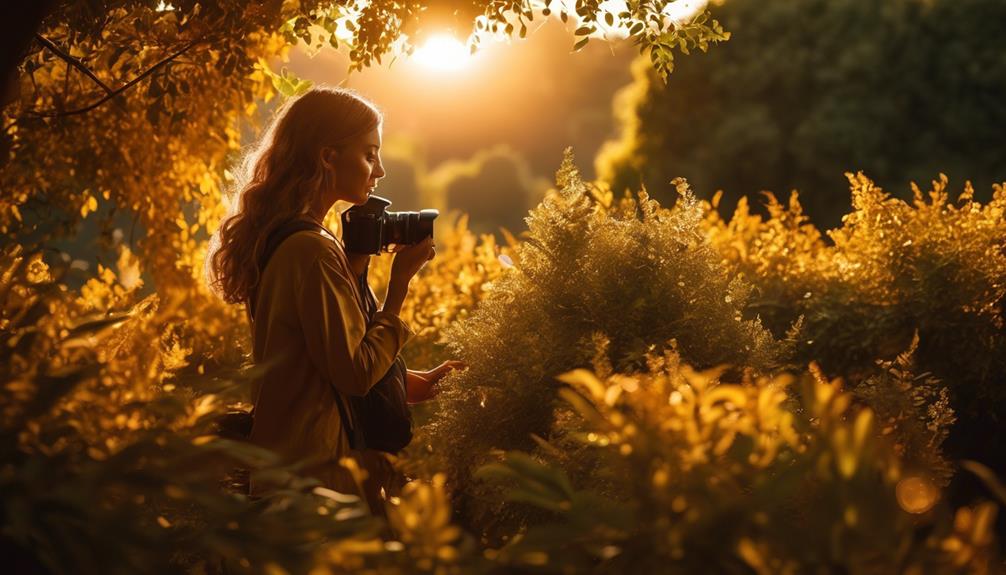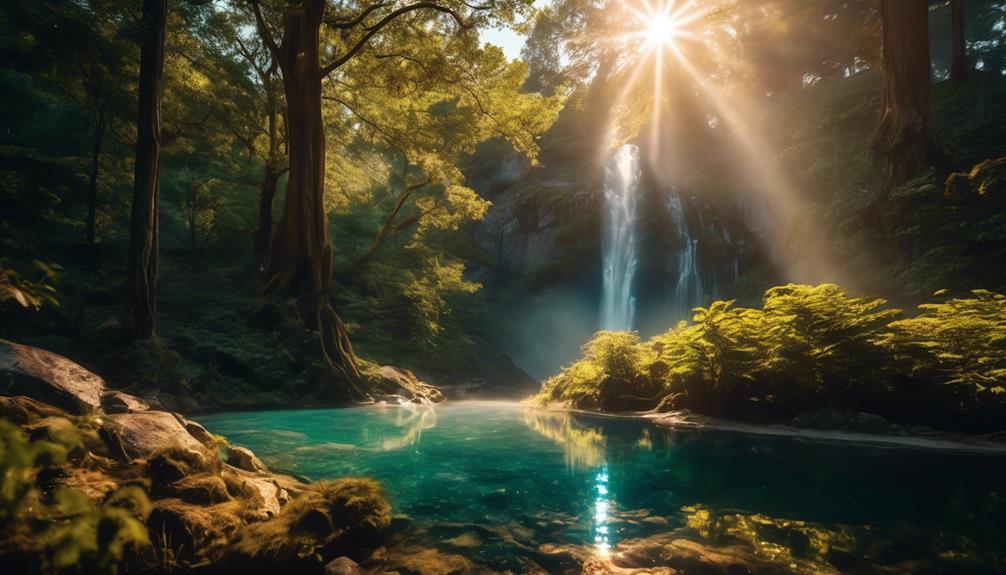Please note this post may contain affiliate links picked by me (Jay) that I have deemed may be of interest or relevant to you the reader of this.
These links do not affect the cost of the thing if you decide to purchase but i may get a little money if you choose to purchase.
For more information on my affiliate link policy click here.
As the saying goes, capturing nature's beauty through the lens is like holding a piece of the world's soul in your hands.
And for those of us who are just starting out on this photographic journey, there's nothing quite as exhilarating as the challenge of mastering nature and landscape photography.
The art of freezing a moment in time, of capturing the raw power and stunning serenity of nature, is both humbling and awe-inspiring.
So join me as we embark on this adventure together, unraveling the secrets and techniques that will transform our novice attempts into breathtaking works of art.
Key Takeaways
- Camera settings, including aperture, shutter speed, and ISO, are essential for controlling depth of field, freezing motion, and capturing flowing water in nature photography.
- Different lens options, such as wide-angle, telephoto, and macro lenses, offer various ways to capture landscapes, isolate subjects, and capture fine details in nature.
- Experimentation is key to finding the perfect balance of camera settings and lens options for each unique landscape, allowing photographers to bring out the best in every shot.
- Lighting and composition play crucial roles in nature photography, with timing, mood, atmosphere, leading lines, and the impact of soft vs harsh light all contributing to visually compelling photographs.
Essential Equipment for Nature Photography
When it comes to capturing the beauty of nature, having the right equipment is essential for creating stunning and captivating photographs. As a passionate nature photographer, I understand the importance of selecting the perfect camera settings and lens options to bring out the best in every shot.
Camera settings play a crucial role in nature photography. To capture the intricate details of a flower or the sweeping panorama of a mountain range, it's essential to have control over your camera's aperture, shutter speed, and ISO. By adjusting these settings, you can achieve the desired depth of field, freeze fast-moving subjects, or capture the soft flow of waterfalls. Experimentation is key to finding the perfect balance for each unique landscape.
Equally important is the selection of lens options. A wide-angle lens is ideal for capturing vast landscapes, allowing you to encompass the grandeur of nature in a single frame. On the other hand, a telephoto lens is perfect for isolating a specific subject, such as a bird in flight or a deer in the distance. Additionally, a macro lens is essential for capturing the intricate details of flowers, insects, or other small objects found in nature.
As a nature photographer, I constantly strive for innovation and pushing the boundaries of creativity. By mastering camera settings and exploring different lens options, I'm able to capture the true essence and beauty of the natural world, creating images that inspire and captivate viewers.
Understanding Lighting and Composition
Mastering the art of lighting and composition is the key to creating breathtaking and impactful nature photographs.
As a photographer, I've come to realize that timing is everything when it comes to capturing the perfect shot in nature photography. The lighting conditions can dramatically affect the mood and atmosphere of a photograph, so it's crucial to be aware of the best times to shoot.
Early mornings and late afternoons, also known as the golden hours, offer soft and warm light that adds depth and dimension to your images. On the other hand, harsh midday light can create strong shadows and wash out colors, making it less ideal for capturing nature's beauty.
In addition to timing, understanding composition is essential for creating visually compelling photographs. One technique that can enhance the overall composition of your nature photographs is using leading lines. These lines can be found in nature, such as winding paths, flowing rivers, or even the branches of trees.
Mastering Exposure and Depth of Field
To create stunning and captivating nature photographs, it's essential to have a strong command over exposure and depth of field. These two elements play a crucial role in capturing the essence and beauty of the natural world. By understanding exposure and depth of field, you can take your nature photography to new heights and create images that truly stand out.
Here are three key techniques to help you master exposure and depth of field:
- Achieving sharpness: Focus techniques are vital in nature photography. Use autofocus to quickly lock onto your subject, or try manual focus for more control. Experiment with different focus points and depth of field settings to achieve the desired sharpness in your images.
- Controlling motion: Shutter speed techniques are essential when photographing nature. Use a fast shutter speed to freeze action and capture details in fast-moving subjects like birds in flight or running animals. Conversely, a slow shutter speed can create a sense of motion and blur in waterfalls or swaying trees.
- Balancing exposure: Proper exposure is crucial for capturing the true colors and tones of nature. Use the histogram on your camera to ensure a well-balanced exposure. Experiment with exposure compensation to adjust the brightness levels and bring out the details in both the shadows and highlights.
Tips for Capturing Dynamic Landscapes
Having a strong command over exposure and depth of field is crucial for capturing stunning nature photographs, and now it's time to explore tips for capturing dynamic landscapes.
When it comes to capturing the beauty of nature, using long exposure techniques can create breathtaking effects. By using a slow shutter speed, you can capture the movement of the elements, such as flowing water or moving clouds, creating a sense of motion and dynamism in your photographs. Experiment with different exposure times to achieve the desired effect.
Another technique to enhance your landscape photography is the creative use of filters. Filters can help you control and manipulate the light entering your camera, allowing you to capture the scene in a more dramatic and artistic way. For example, a polarizing filter can reduce glare and enhance colors, while a graduated neutral density filter can balance the exposure between the sky and the foreground. Don't be afraid to experiment with different filters and see how they can transform your images.
Editing and Post-processing Techniques
Let's dive into the world of editing and post-processing techniques, where we can unleash the full potential of our nature and landscape photographs. As photographers, we capture stunning images in the field, but it's during the editing process that we truly bring our vision to life.
Here are three essential techniques that will take your photographs to the next level:
- Color grading techniques: By manipulating the colors in your image, you can create a specific mood or enhance the natural beauty of the scene. Experiment with different color grading presets or create your own unique look. Don't be afraid to push the boundaries and let your creativity shine.
- Advanced retouching methods: Sometimes, nature can throw us a curveball, introducing unwanted elements into our photographs. With advanced retouching techniques, you can remove distractions, smooth out imperfections, and bring focus to the subject. Use tools like spot healing, clone stamping, and frequency separation to achieve flawless results.
- Selective adjustments: Nature and landscape photographs often have varying lighting conditions and exposure levels. With selective adjustments, you can target specific areas of your image and make precise edits. Whether it's brightening up shadows, enhancing highlights, or adjusting the saturation of certain elements, selective adjustments allow you to fine-tune every detail.
Editing and post-processing are powerful tools that allow us to transform our raw captures into stunning works of art. Embrace the possibilities, explore new techniques, and let your creativity soar. With the right skills and a touch of innovation, your nature and landscape photographs will truly stand out from the crowd.
Frequently Asked Questions
How Can I Effectively Photograph Wildlife in Their Natural Habitat?
To effectively photograph wildlife in their natural habitat, I've learned a few important tips.
First and foremost, it's crucial to prioritize ethical practices. Respecting the animals and their environment is essential for capturing their true essence.
Secondly, patience is key. Spending time observing and understanding their behavior allows for capturing those intimate moments.
Lastly, be prepared with the right equipment and techniques to ensure you can capture the beauty and wonder of these incredible creatures.
What Are Some Tips for Finding Unique and Lesser-Known Locations for Landscape Photography?
Discovering hidden gems for landscape photography is like finding a needle in a haystack. It's both exciting and challenging.
As a passionate photographer, I constantly scout for unique locations that offer a fresh perspective. To uncover these lesser-known spots, I rely on research, local knowledge, and my intuition.
Exploring off the beaten path allows me to capture innovative and awe-inspiring images that stand out from the crowd.
How Can I Capture the Beauty of Starry Night Skies and Astrophotography?
Capturing the beauty of starry night skies and astrophotography is an exhilarating experience.
To master this art, one must understand night photography techniques and the best camera settings for astrophotography.
The key lies in finding a location with minimal light pollution, using a tripod for stability, and setting a high ISO to capture the stars' brilliance.
It's a challenging but rewarding endeavor that allows us to witness the wonders of the universe and share them with others.
Are There Any Specific Techniques for Photographing Moving Water and Creating Stunning Waterfall Images?
Photographing waterfalls and capturing the motion in water is truly an art form. It requires a combination of technical skill and creative vision to produce stunning images.
By using a slower shutter speed, you can create a beautiful silky effect with the flowing water. Experimenting with different angles and perspectives can also add a unique touch to your photographs.
Don't be afraid to get up close and personal with the water, it can create a dynamic and captivating image.
Can You Provide Some Guidance on How to Achieve a Professional and Polished Look in Post-Processing Without Over-Editing the Image?
When it comes to achieving a professional and polished look in post-processing, it's all about finding the right balance.
I've learned that the key is to enhance the details without adding noise and to achieve natural colors.
By using techniques like selective sharpening and adjusting the contrast and saturation levels, you can bring out the best in your images without over-editing them.
It's about letting the beauty of the landscape shine through while still adding your own creative touch.
Conclusion
As the sun sets over the majestic mountains, I can't help but feel a sense of awe.
Nature photography has allowed me to capture these moments of beauty and share them with the world.
With the right equipment, understanding of lighting and composition, and mastery of exposure and depth of field, anyone can become a skilled nature photographer.
So grab your camera, explore the great outdoors, and let your passion for capturing stunning landscapes be your guide.


